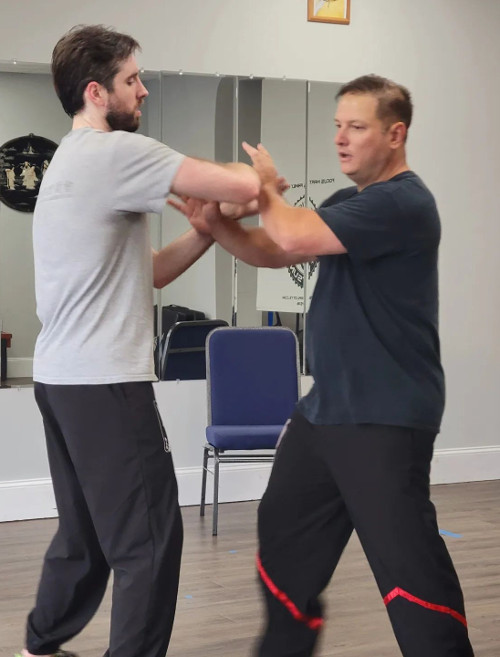
Why Train Kung Fu?
- Self-defense
- Efficient body mechanics
- Flexibility
- Relaxation
- Reflexes
- Confidence
- Stress relief
- Awareness of surroundings
Typical Class
A typical class will focus on many elements and
specific key principles will flavor the day's training.
While each class differs, components of a class would be:
- Warm-ups
- Forms: stretch and learn standard techniques
- Drills: refine techniques and principles
- Application (focus on principles and flow):
- Laat sau: disconnected hand
- Chi sau: sticky hand
- Guo sau: crossing hand
Journey to Mastery
There are many stages to training and the emphasis will shift throughout your journey to mastery. Wing Tsun is taught through principles, not tecniques. We master techniques through forms and drills, but any application from day 1 should be executed through principle. Each technique will serve as a base movement that can be applied in many situations (like words). The principles are guidelines for determining optimal reactions (like sentence structure and grammar). It is up to the artist to form coherent sentences to convey intent with training. It is imperative to keep good repor with your training partner. To this end, we will always practice self-control and good communication. Training, even sparring, should be cooperative. Even while both contestants are competitive, the overall training is cooperative so each will learn from the interaction and nobody gets injured.